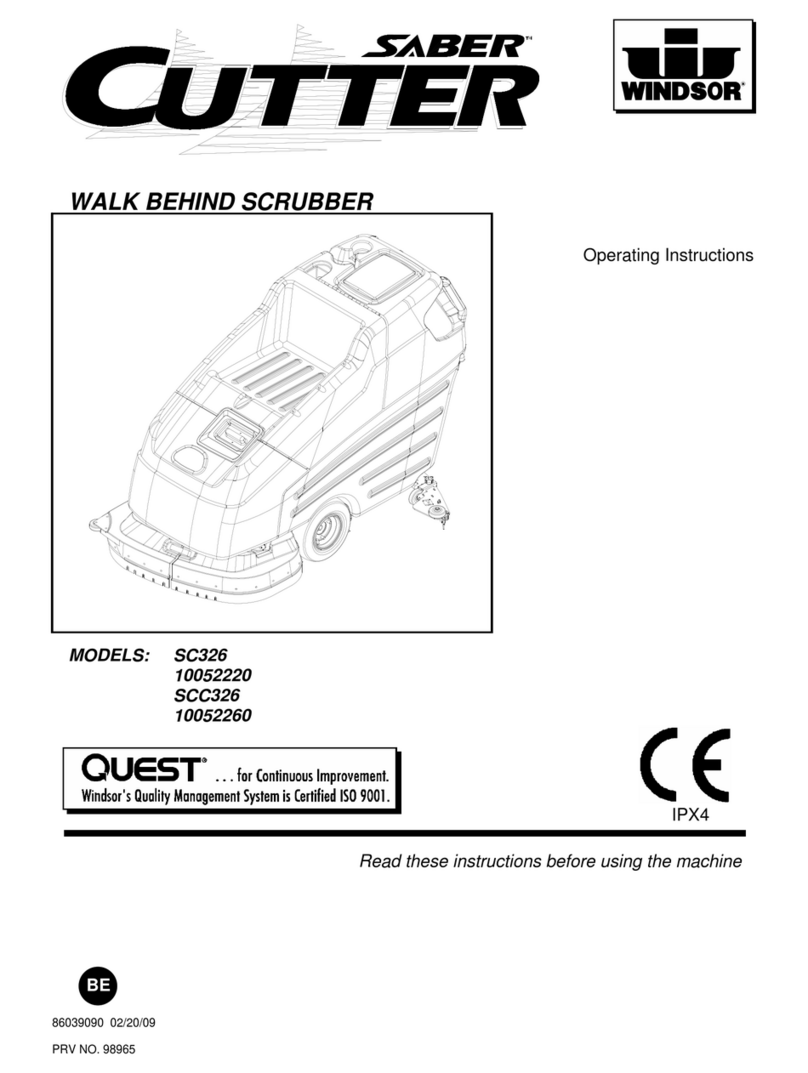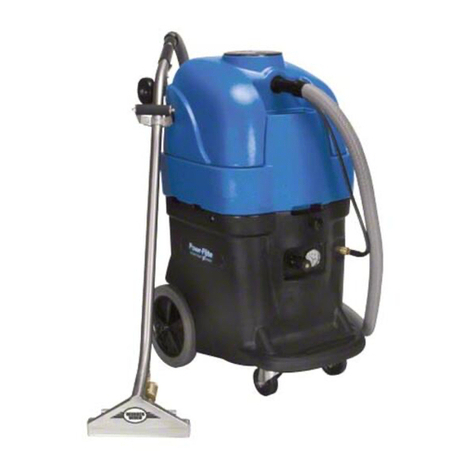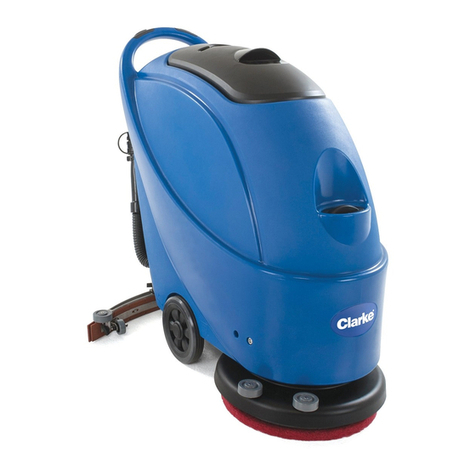
407/2020
Maintenance Safety
• Perform all routine maintenance outlined in this
Operator’s Manual in the time intervals indicated.
• Maintenance, lubrication and repair of this machine
can be dangerous unless performed properly. In order
to ensure safety, each person working on this water
extractor must have the necessary skills, information,
tools and equipment, and satisfy himself that his work
method is safe, correct, and meets his own company’s
requirements.
• Do not attempt to make adjustments, or perform repairs
unlessyouareauthorizedandqualiedtodoso.
• Never attempt to service energized
equipment.
• Alwaysshutoandsecure
power when servicing the wa-
ter extractor.
• Disengage the water extrac-
torandshutopower,and
wait for all movement to
stop
before adjusting, lubricat-
ing, cleaning, or
servicing the water extractor.
• Tag the Control Box with a ”DO NOT START”(See
CautionStatementonPage10)
• Any unauthorized modications made to the water
extractor by the customer or parties other than Allied
Systems will relieve Allied Systems Company and your
Freemandealerofanyliabilityfordamageorinjury.
• ReplaceanywornpartsonlywithgenuineFreeman
parts. Call your dealer for assistance.
• Unlessspeciedinserviceprocedures,neverattempt
maintenance or lubrication procedures while the water
extractor operating.
• Before making adjustments to the electrical system,
turnthepowero.
• Do not operate the water extractor if you are aware
of any malfunctions, needed maintenance or repairs.
• Stop the water extractor immediately if any problems
arise.
• Never operate the water extractor without all safety
shielding in place.
• Keep hands, feet, hair, jewelry and clothing away from
moving parts.
• Avoid wearing loose clothing which can easily be
caught in moving parts.
• Knowyourjob-siterules.Somehavesite-specicdi-
rections and procedures. The methods outlined in the
operators manual provide a basis for safe operation
of the water extractor. Because of special conditions,
yourcompany’sproceduresmaybesomewhatdierent
from those shown in the operators manual.
• Do not start the water extractor if it has been marked
with a “DO NOT START” or “RED” tag.
• Alert personnel in the area before starting the water
extractor, and make sure everyone is clear.
• Each country has its own safety legislation. It is in the
operator’s own interest to be conversant with these
regulations and to comply with them in full. This also
applies to local bylaws and regulations in force on a
particular worksite.
• Should the recommendations in this manual deviate
from those in the user’ country, the national regulations
should be followed.
• Never attempt to disconnect any of the safety devices
built into the water extractor.
Hydraulic Hazards
Be aware of the hazards of pressurized hydraulics:
• Wear personal protective equipment,
such as gloves and safety glasses,
whenever servicing or checking a
hydraulic system.
• Assume that all hydraulic
hoses and components
are pressurized. Relieve
all hydraulic pressure
before disconnecting any
hydraulic line.
• Never try to stop or check for a hydraulic leak with any
part of your body; use a piece of cardboard to check
for hydraulic leaks.
• Small hydraulic hose leaks are extremely danger-
ous, and can inject hydraulic oil under the skin, even
through gloves.
• Infection is possible when hydraulic oil
penetrates the skin. See a doctor
immediately to prevent loss of limb or death.



























